The idea for this puzzle was that the players needed to find an address, and they were given a map and a pile of tokens, and given the instructions "your friend likes to take things from places he's been. Retrace his steps to get the answer." The goal was that if they placed the right tokens in the right place on the map, it would complete the circuit and light up the answer, which was LEDs placed under specific words and numbers in the key, lighting up to spell "634 Main", which is the address they were looking for (as an aside, the players would recognize this particular address from something else).
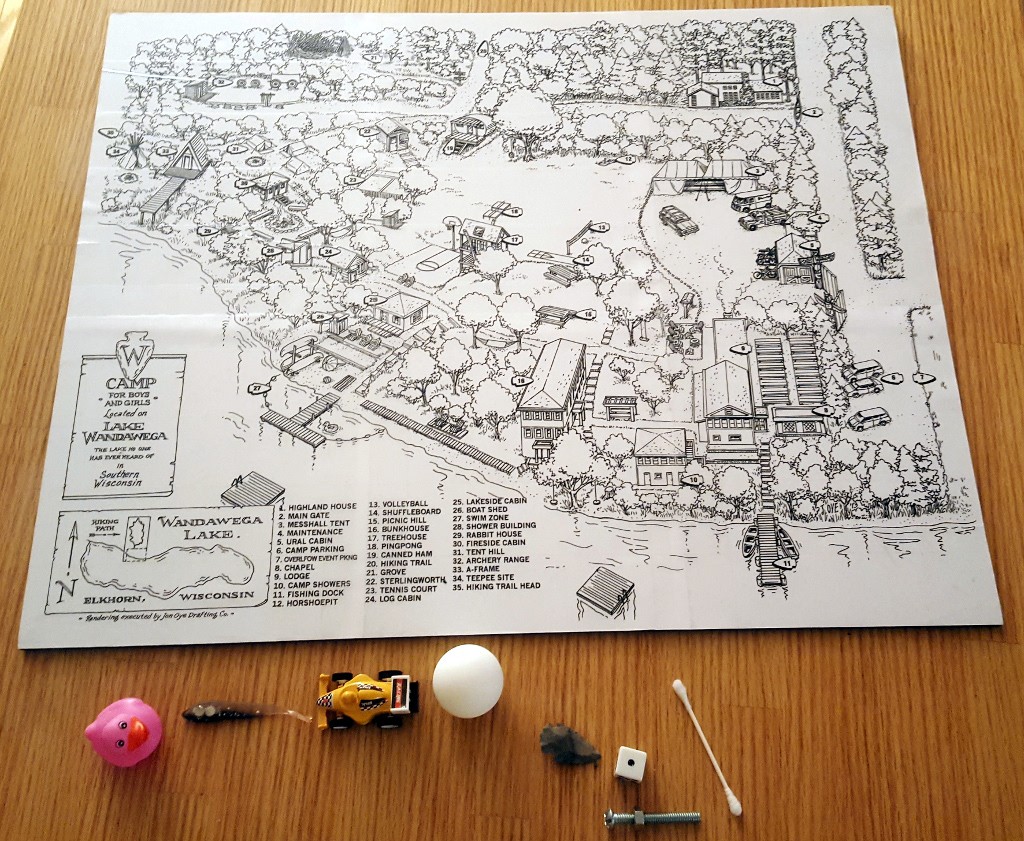
The escape room took place at Camp Wandawega, so I used the map from their website, downloaded it, blew it up and cut it up into printable tiles, and cut out the tiles and taped them. In retrospect, I should have just had posters printed, as they would have looked nicer and saved time, without the need for all the alignment and cutting.
I needed two copies; the first was sacrificial. I placed it over the foam core board and used a knife to cut through the sacrificial copy to mark the board below in the locations where I wanted to do stuff. This way everything would be perfectly aligned.
With the locations known on the foam core, I set about cutting it out. I needed an area for the CR2032 battery, for which I had a convenient .8" PCB and battery holder, and the whole mechanism fit nicely inside the foam core after I carved out an area for it.
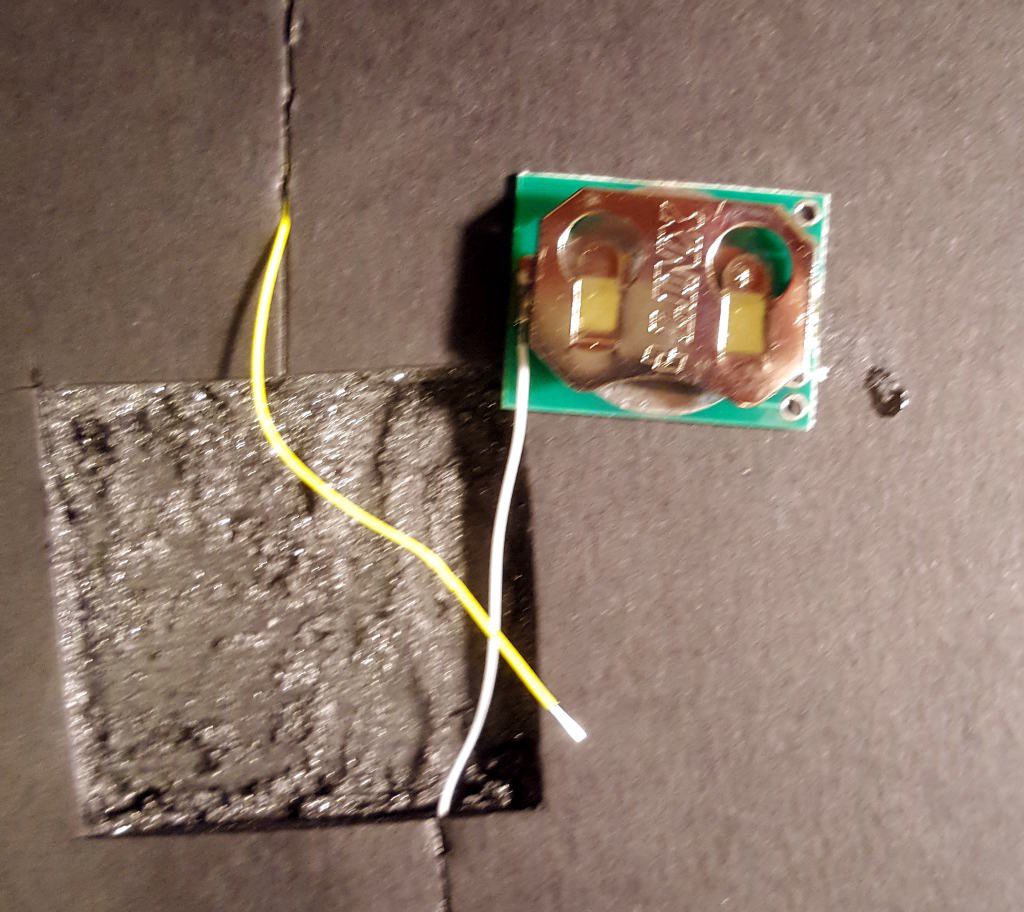
Then I scored lines to each of the locations where I put the reed switches, and excavated extra material there, making a snaking line around the whole foam core. When I got the the LED area of the key, I carved out squares where I wanted to illuminate, hoping that the square area would illuminate. It didn't work out so well because the LEDs were so close to the paper that there wasn't room for diffusion and I got focused points of light. It still worked, just not as pretty as I wanted.
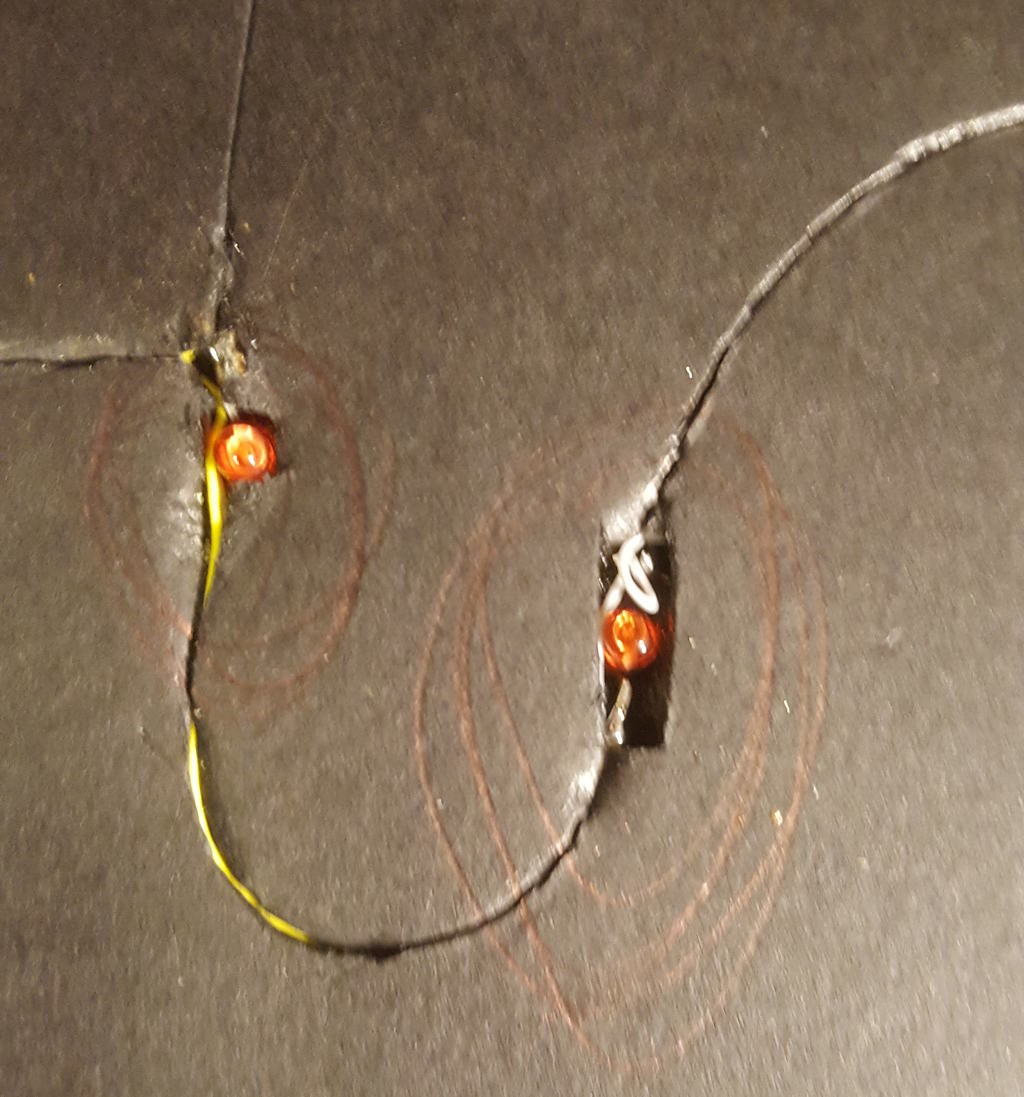

Wiring was simple. A small wire went from one side of the battery to each of the switches in series. At the end of the string of switches, the wire branched out and hit each of the LEDs in parallel before returning to the battery on the other terminal. Because of the internal resistance of the battery, I didn't need to do anything with current limiting resistors.
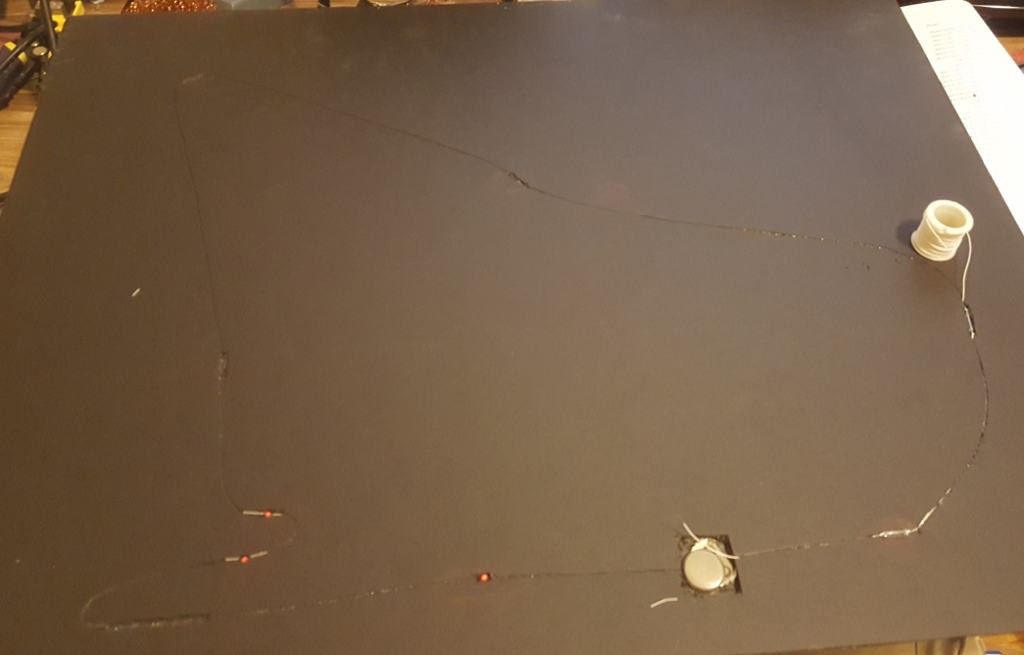
Once everything was wired up, I was able to test it out to verify that it all worked. It did, though one of the glass reed switches had cracked and was unreliable. I replaced it and was ready to close it up. I tacked down one corner and made sure that alignment was correct. Then I used spray adhesive to attach the map to the foam core. After that I trimmed the edge so that the whole thing had nice edges.
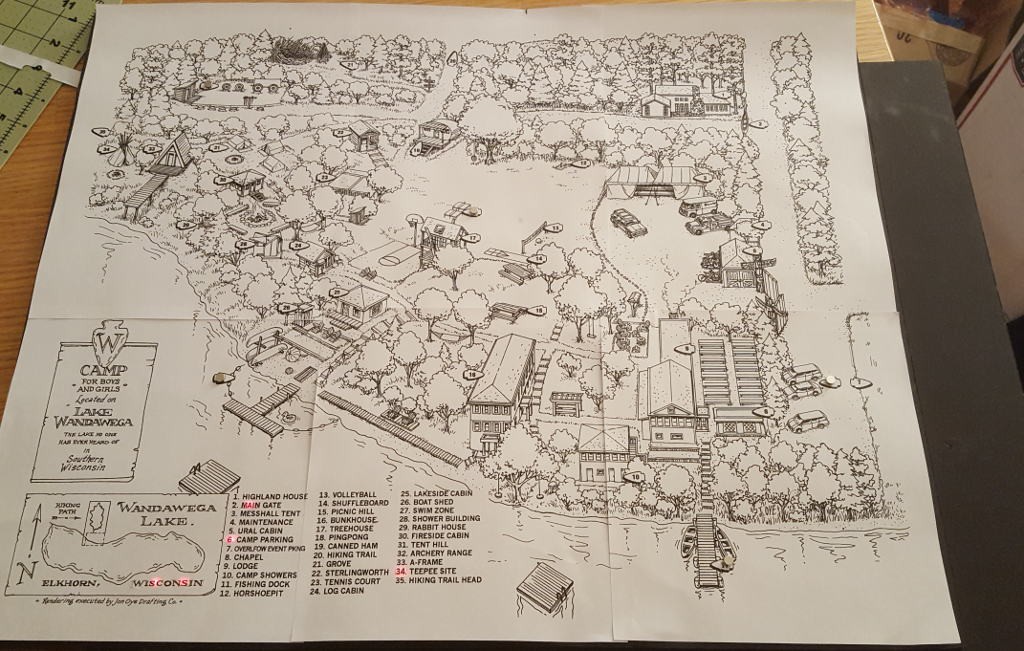
Since the whole thing was paper, and taped together in various places, I used packing tape to laminate the whole thing.
With the map portion complete, I then acquired tokens and embedded rare earth magnets into them. This was pretty easy for some of the tokens, and really hard for the arrowhead, which was dremeled out of agate over a really long time.
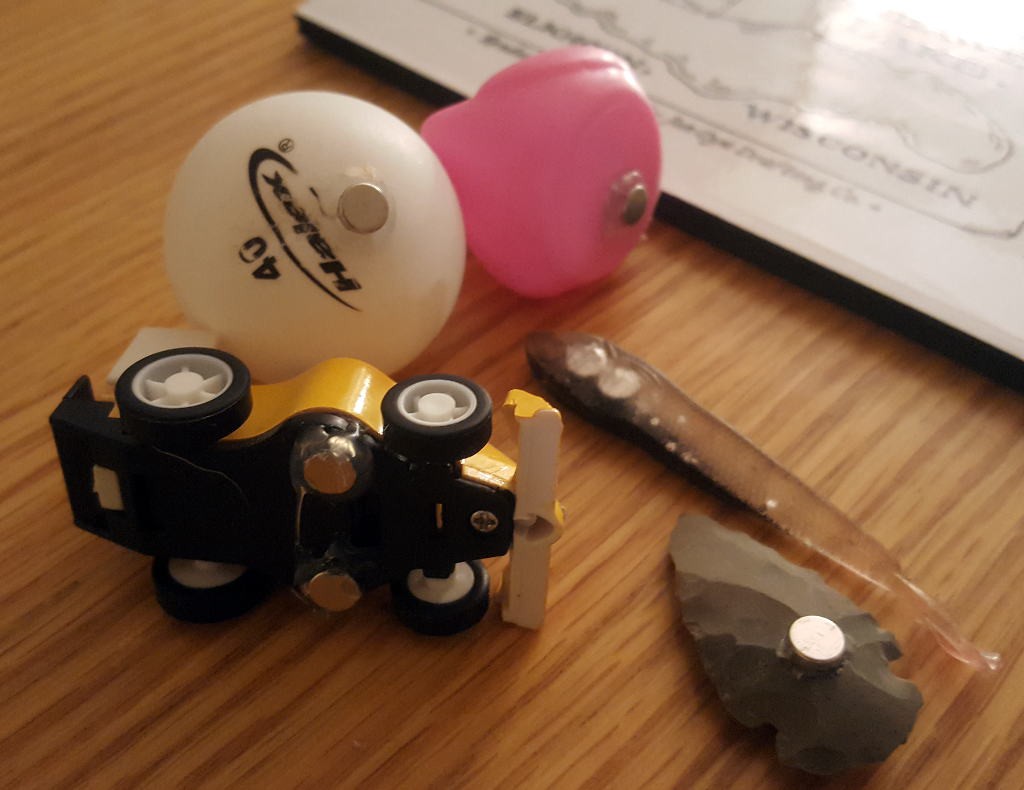
Unfortunately, hiding the magnets meant that they were further away from the switch, so they had to be directly over it to work. In play testing, people also didn't recognize what they were trying to do. I solved this by putting additional magnets on the outside of the tokens, which helped significantly.
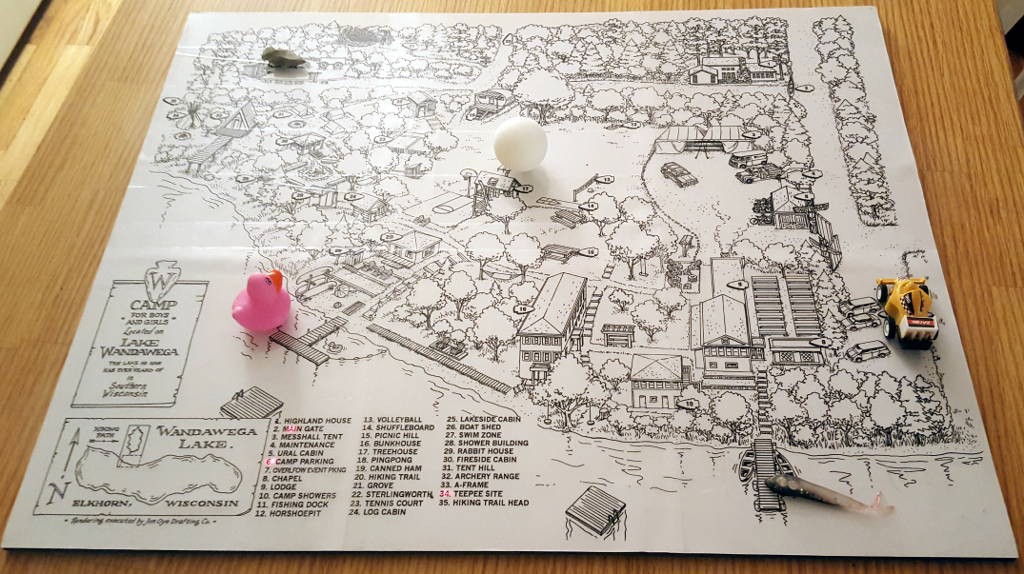
In the end, the project went over really well and was appreciated by the players. I'm sure it'll be able to run for a long time, even off the single CR2032, primarily because it's only on for a few minutes at a time, and should be able to run for hours. I was particularly proud of the fact that it was not apparent at all that there were electronics embedded inside the foam core; even the back side was impossible to tell.
 Bob Baddeley
Bob Baddeley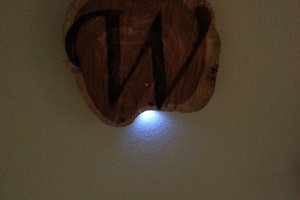
 Josh
Josh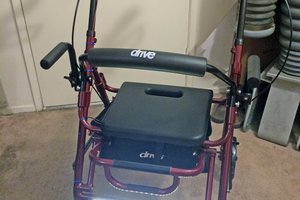
 scubabear
scubabear
 leadacid44
leadacid44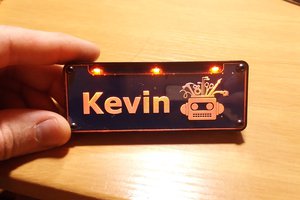
 Kevin Arne
Kevin Arne